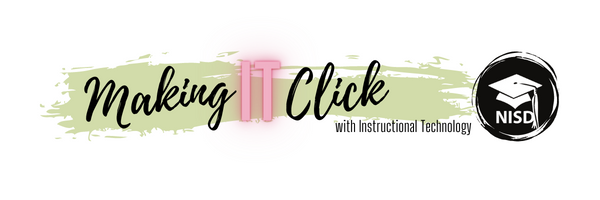
 At Gene Pike Middle School, 6th grade World Cultures teachers Connie Garza and Dawn Goldstein want to do more than teach their students about other places -- they want to show their students the world. Consider for a moment that 2018 research discovered 1 in 10 Americans has never left their home state, for financial or other reasons. With this in mind, it's safe to assume not all of our students will have the opportunity to visit many of the far-off places they're learning about in school.
At Gene Pike Middle School, 6th grade World Cultures teachers Connie Garza and Dawn Goldstein want to do more than teach their students about other places -- they want to show their students the world. Consider for a moment that 2018 research discovered 1 in 10 Americans has never left their home state, for financial or other reasons. With this in mind, it's safe to assume not all of our students will have the opportunity to visit many of the far-off places they're learning about in school.Still, we know that learning to understand other cultures and gaining perspective on how other people live is an important part of succeeding in our global society and in learning to be a well-rounded individual. Thanks to Google’s Virtual Reality (VR) Tour Builder, even if Garza and Goldstein can't fly their students abroad, they can still take them to places all over the world.
For context, Google’s Virtual Reality platform relies on Google Earth’s existing 360-degree footage, making it possible to virtually explore any place in the world through your computer screen or a pair of VR Goggles. What’s even better? Their VR Tour Creator allows people (in this case 6th graders) to design a virtual tour with stops anywhere around the globe and lets them embed their own photos or written details into the tour.
 After explaining their task to students, Goldstein and Garza used student-led stations to guide their learning about Europe. During their stations, students used hyper docs and other printed and digital resources to learn about European countries overall, documenting what they learned in their “travel journals” and earning stamps in their “passports” for visiting each country. Throughout this step, students gained important insight into the countries and cultures that would ultimately help them build their tour during work-time.
After explaining their task to students, Goldstein and Garza used student-led stations to guide their learning about Europe. During their stations, students used hyper docs and other printed and digital resources to learn about European countries overall, documenting what they learned in their “travel journals” and earning stamps in their “passports” for visiting each country. Throughout this step, students gained important insight into the countries and cultures that would ultimately help them build their tour during work-time.A major challenge in a project like this -- where students are focusing on only one from a list of topics they need to be experts on -- is making sure students master their overall learning about European culture and geography, while still highlighting the country they are most interested in learning more about. To address this, Garza and Goldstein made sure students visited each country through the exploratory stations, but they also gave students a peer audience. Because students would be sharing their projects with each other, they were motivated to do their best work; meanwhile, students were exposed to numerous European countries through their peers' student-created virtual tours.
One thing to remember is that you don’t need VR goggles to make Google’s Tour Builder interactive and exciting. Anyone can explore the tours online, and students can use the “hotspot” feature. For this project, they were asked to add detailed pictures, important travel notes, and fun facts about the culture and geography to make their tours more interactive. For example, one student used a hotspot near Italy’s Leaning Tower of Pisa to clarify that a modest dress code is an important consideration when visiting Italian landmarks. Ultimately, creating tours through Tour Builder is easy, but this "hotspot" feature lets students add reflective depth and learning to their creation. It is a feature that educators can rely on to make the task of creating more rigorous. You can see a student-created tour of Italy here: Example.
Through this project, Garza and Goldstein undoubtedly created a few travel-bugs, but even more, they gave students the opportunity to imagine themselves going on great adventures. They gave this group of sixth graders the chance to be (virtual) world-travelers.


No comments:
Post a Comment
Note: Only a member of this blog may post a comment.